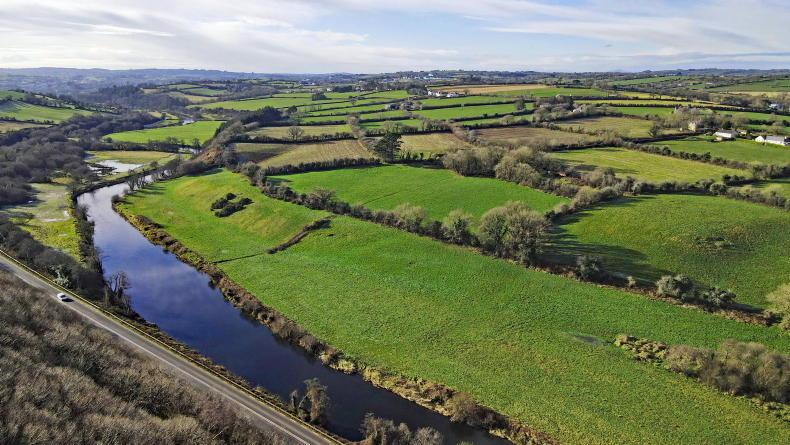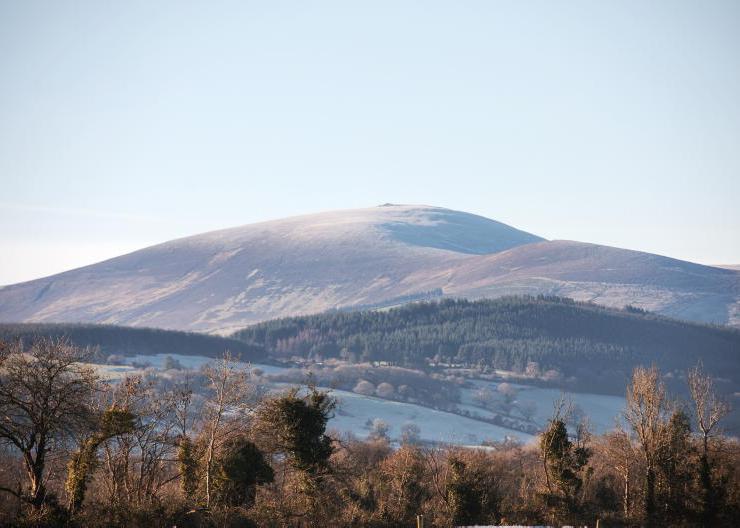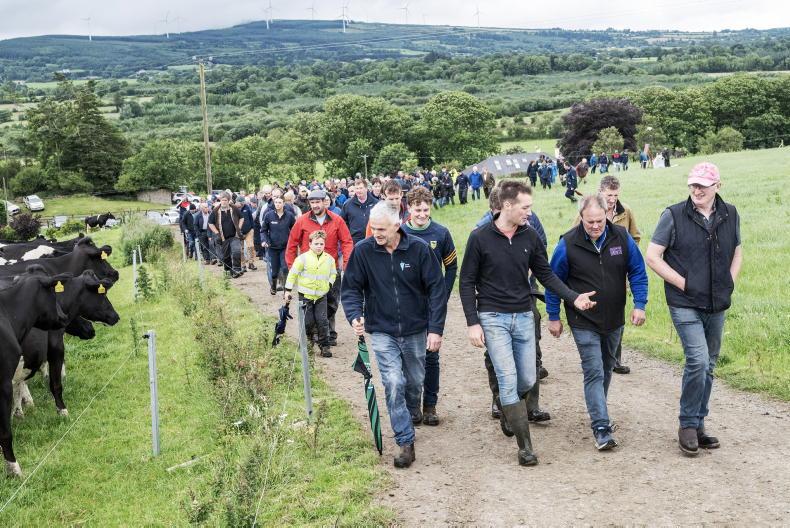The programme for government is strongly supportive of the agri-food sector and fully committed to supporting farmers and food businesses.
It pledges to maintain support for the main farm enterprises and achieve an average 7% annual reduction in greenhouse gas (GHG) emissions from 2021 to 2030.
The bill to enact legislation for pursuing the transition to a climate-resilient, biodiversity-rich and climate-neutral economy by no later than the end of 2050 has been approved by the Oireachtas and is now law.
So, finally, after a long period of worldwide attention to the worsening climate change crisis and the urgency of taking critical action to reversing global warming, D-day has come for governments and the respective economic interests to set out their responses to these concerns.
No longer can they continue to beat about the bush and must now grasp the nettle for change and action.
New ballgame
For the agri-food sector, this is a whole new ballgame. For decades, Government policy was mainly focused on agricultural expansion.
Farmers themselves were, and still are, imbued with that mindset and based their production decisions on prospects and returns from the marketplace.
That stance must now move on to a new paradigm, which requires a profound shift towards more sustainable policies and actions.
No longer can they continue to beat about the bush and must now grasp the nettle for change and action
As stated in the Agri-Food Strategy 2030, the sector should become carbon-neutral by 2050, with verifiable progress by 2030 encompassing emissions, biodiversity and water quality.
It proposes expansion in tillage, horticulture, organic production and forestry, while emphasising that the core of Ireland’s agri-food output will continue to be grass-based livestock production, wherein lies Ireland’s natural competitive advantage.
The context for the future has utterly changed, with every farm decision evaluated with respect to its environmental implications. Reducing or even curtailing farm output goes fundamentally against the DNA of the agricultural establishment and how this can be affected is obviously a matter of concern.
Focus on national herd
Agriculture accounts for approximately one-third of Irish GHG emissions, driven mainly from the national cattle herd and nitrogen fertiliser use.
In response to the commitment of an annual reduction of 7% in GHG emissions to 2030, the focus is firmly on the national cattle herd as the primary source of emissions from agriculture.
Whereas virtually every reference to reducing the national herd to achieve this objective is coming from environmental interests, unsurprisingly this is met with a certain degree of circumnavigation across the agricultural fraternity.
Sooner or later, this issue will have to be faced up to, but whether the reduction in numbers comes from the dairy or beef cow herds is an important matter.

The impact for the national and farm economy would be far greater if the dairy sector were to bear the brunt of the herd reduction. Each 10% decline in the dairy herd would reduce the value of agri-food exports by two-thirds of a billion euro, a significant reduction in aggregate dairy farm income, a corresponding decline in farm labour requirements and a fall in the multiplier effect of dairying on the local and national economy.
The impact for the national and farm economy is far greater if the dairy sector were to bear the brunt of the herd reduction
With respect to the beef herd, it would require a fall of about 15% to match the aforementioned decline in dairy cow numbers, but the decline in the value of exports would be less than half of that for dairy produce.
But there would be little or no reduction in beef farm income, as market output for many years has not been sufficient to cover production costs.
However, the impact on the reduction in GHG emissions from the above examples is of interest, as the 10% reduction in dairy cow numbers affects a greater reduction on GHG emissions than the 15% in the beef cow herd reduction strategy, as dairy cows are associated with higher emissions than beef cows.
The above exercise demonstrates that, unless effective mitigation strategies are developed and adopted, the adjustment to the green agenda will have a significant negative impact on farm incomes and agri-food exports, and potentially on the most competitive and efficient farm enterprise, which is dairying.
Current research
Current research and development activity in Teagasc is responding to the climate action agenda through the Signpost Programme by implementing measures on farms to reduce GHG emissions, and to continue to research new technologies.
These technologies include feed additives, livestock breeding, changes in fertiliser use and multi-sward species.
However, it is acknowledged that there is little prospect of scientific solutions alone being sufficient to meet the 2030 target of a 51% reduction in emissions.
It is acknowledged that there is little prospect of scientific solutions alone being sufficient to meet the 2030 target of a 51% reduction in emissions
The Agri-food Strategy 2030 also suggests expansion in certain areas as a means of offsetting the probable negative effects on the livestock sector.
Of these, forestry offers the best prospects. The replacement of beef farming with forestry is a win-win scenario. It increases farm income, reduces GHG emissions and significantly increases carbon sequestration.
The proposal to develop a horticultural sector and other plant-based products aimed primarily at the Irish market, while commendable, will be difficult to achieve.
Ambitious target
Likewise, the target to increase the land being farmed organically to 7.5% of utilisable agricultural area (UAA) by 2030 is somewhat ambitious, given that it has taken over 20 years to reach the present level of 2%.
In any event, organic and arable farming can be subjected to scrutiny from a market, financial and technical perspective and the outcome of that exercise can then inform the extent to which these enterprises have a place in Irish farming.
Biodiversity will also be a key feature of the new era, given its obvious strong links to agriculture. It is important to promote a greater awareness and appreciation of the significance and importance of this feature among the wider agricultural community and the rollout of a pilot farm environmental study to provide farmers with an inventory of habitats, biodiversity and environmental information about their own farms is a welcome, if belated, development.
Indeed, rewarding farmers for preserving and enhancing biodiversity could feature as measures in the next CAP programme up to 2027.

The process of adapting to the climate action era will be a challenging and unsettling experience for many farmers.
For dairy and beef cattle farmers in particular, there will be a greater emphasis on animal productivity rather than on animal numbers as a means of maintaining incomes, while all farmers will need to give consideration to diversification options both on and off-farm.
The transition will almost certainly be a slow process, as the aptitude and skills to adopt new activities could take quite some time to evolve.
The position of that cohort of landholders with beef cattle enterprises is the most problematic.
A great majority of the over 80,000 of them have the lowest incomes, are older than average, have less contact with support services and are more conservative in their farming activities.
They probably are the least likely to be receptive to alternative options to their most familiar farming activity and quality of life.
The transition will almost certainly be a slow process, as the aptitude and skills to adopt new activities could take quite some time to evolve
In conclusion, the farming sector is now confronted with the strangest scenario imaginable.
The vast majority of farmers have cattle and this is the very enterprise which produces Ireland’s finest farm products, but also the unmentionable GHG.
What may ultimately transpire - and the most logical economically - is that the beef herd may bear the brunt of the adjustment to a more environmentally friendly agriculture and dairying may continue to expand and provide the material for a reduced beef sector.
In any event, it may be difficult to fully reconcile the ambition in the programme for government with that in the Climate Change and Low Carbon Act, and it will take a generously funded agri-environmental programme to facilitate a just transition for all concerned.
Finally, the experience and response to the first five-year carbon budget will likely be a testbed for the operation of the climate action programme and set the pattern for the subsequent 25 years.










SHARING OPTIONS